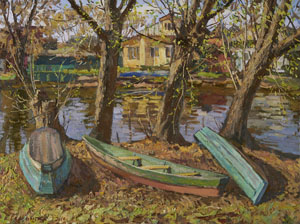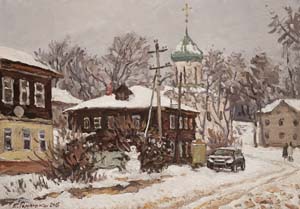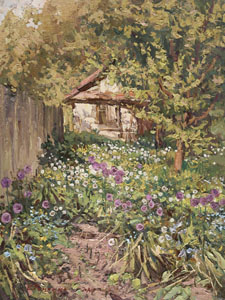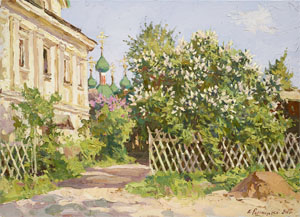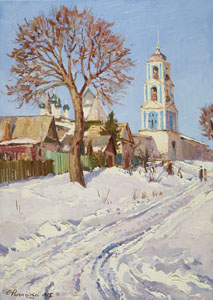Evgeny Romashko, artist

A keen consideration of contemporary critical theory helps to discover an immense body of painterly tradition, which supplies and is hidden behind the abundant foliage of productive ideas. Some of them are consistently expressed by brilliant painter Evgeny Romashko whose art embodies the profound values of mastery, the succession of quest, and the renewal of expressive realistic content. Much has been written about Evgeny Romashko’s art, so another art-historical analysis of his newest landscapes will hardly add anything radically new to what had been said before. This obvious thought makes us ponder on the conditions of interpretation of academic art and traditional visual matter, which is distanced from the issues identified as contemporary. Is there a system of interpretation in which landscape and the whole traditional visual strategy become not only sources of aesthetic values but also ways of producing contemporary meanings? On which grounds should a productive analytical mediation stand, when traditional visual discourse is allotted with contemporary meanings, and art sees a new path for itself? Which interpretative models can be used to speculate on Evgeny Romashko’s painting?
Evgeny Romashko - Academician of the Russian Academy of Arts, People's Artist of Russia
Academician of the Russian Academy of Arts (2009), member of the Presidium of the Russian Academy of Arts (2014), People's Artist of Russia (2012).
He graduated from Republican Art high school named after Taras Shevchenko (1980.), The Moscow Higher School of Industrial Art ( Stroganov) (1985).
Awards: Silver Medal of the Russian Academy of Arts (2003). Gold medal of the Russian Academy of Arts (2010). Gold medal of the Creative Union of Artists of Russia (2005.), Medal "worthy" ...
Evgeny Romashko was born in 1962. in Zaporogie (Ukraine).
Academician of the Russian Academy of Arts (2009), member of the Presidium of the Russian Academy of Arts (2014), People's Artist of Russia (2012).
He graduated from Republican Art high school named after Taras Shevchenko (1980.), The Moscow Higher School of Industrial Art ( Stroganov) (1985).
Awards: Silver Medal of the Russian Academy of Arts (2003). Gold medal of the Russian Academy of Arts (2010). Gold medal of the Creative Union of Artists of Russia (2005.), Medal "worthy" of Arts (2012), Gold Medal of Russian Union of Artists (2012), Gold Medal of the Ministry of Agriculture (2012), medal "50 years of MOSH Russia."
Winner of the Prize. V.E.Popkova International Art Fund (2007).
His works are kept in Pereslavl-Zalessky State Historical-Architectural and Art Museum-Reserve, Plyos state historical-architectural and art museum-reserve, Ryazan State Regional Art Museum named after IP Pozhalostina, Stavropol Regional Museum of Fine Arts, Chelyabinsk Museum of Fine Arts, Kostroma state historical-architectural and Art Museum-reserve, the Ivanovo regional Art Museum, Kineshma Museum of Fine Arts, Tula regional Art Museum, Voronezh regional Art Museum. Kramskoy, the Primorye State Picture Gallery (Vladivostok), Krasnodar Regional Art Museum. Kovalenko, Simferopol Art Museum, the Museum of Watercolor g.Mehiko (Mexico), in museums Liu Means (Harbin, city Daylyan (China), in the Russian Culture Fund meeting in private collections in Russia and abroad.

